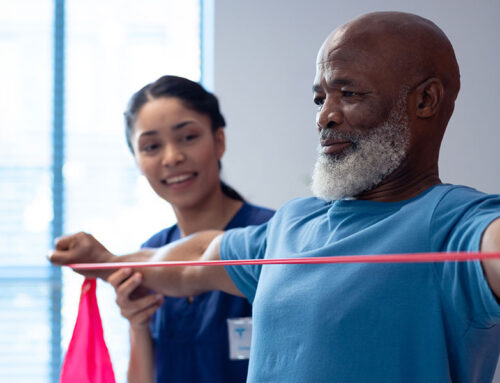As a Clinical Myotherapist a large part of my work involves lifestyle intervention and exercise prescription. With this a large percentage of clients I see present to me with similar cases, that due require education and lifestyle enhancements.
I often hear the phrase “I’m just so tight through my neck and shoulders’, “my back is so stiff” or “my hip flexors are always tight”. This is often accompanied by some self demonstrated stretches of the shoulders across the body or moving the neck to one side followed by a grimacing look on the face as they push their body further into pain and dysfunction.
Now let’s get to into it. There is number of different muscular presentations we see. I want to help others understand the different aspects and how to differentiate between the two.
Example 1 – A chronically overworked, dysfunctional, weak muscle can feel “tight” when it’s really just fatigued or overworking.
Example 2 – Now in contrast you may experience tightness after a hard work out like tight calves after running a half marathon for example.
With this it’s important to differentiate. In example 2 there has been a stimulus (half marathon) which was followed by muscle damage (which is a normal response to training) and this resulted in the tightening of relevant muscles during their recovery and adaptation phase (to reduce chance of injury while the muscles are not able to perform at their full capacity).
Now looking at the common complaints I hear which I mentioned above. Starting with “I’m just so tight through my neck and shoulders’ These often seem to come from individuals with a rather sedentary lifestyle, someone who has spent large amount of hours over at a desk in an extended static position.
Are there muscles tight and in need of stretching? Yes, maybe this will help short term but most likely not in the long term!
What’s happening is the clients are in need of some extra strength in those areas which are being loaded more, becoming fatigued too quickly and therefore predisposing them to a pain presentation.
Stretching is not bad and in no way am I condemning it. It’s just like anything it should be used as needed, specific to the condition or desired result, there’s no one size fits all t-shirt that you throw on every single part of your body that starts to show any signs of pain.
When should you stretch?
When you stretch a muscle you are trying to impact on its elasticity. Now to put this in perspective if a muscle is weak tired and dysfunctional and struggling to do its job, do you think that stretching it and making it longer will help it to do its role?
I find stretching should be used to counter positions that we often spend too much time in. For example lets talk about an individual who sits at a desk all day. They spend 8 hours a day in a single position at a computer screen. In this case stretching into the opposite direction of the assumed position during the day is a good way to provide stretch to some of the muscles of the front of the body that have been shortened all day by leaning over forward.
When should you strengthen?
When you want to give support and stabilisation to the bony structures of the body. Strength in muscles will enable the body to move efficiently with less effort, which in turn means that the body can move more better and hold postures longer before becoming fatigued. So using the same example as above rather than stretching the muscles of the back and neck and shoulders which get sore during extended periods of sitting at a desk with poor posture, strengthening the muscles which are used to assume a good position during the day and limiting the time spent in an ineffective posture is a great place to start.
Key differences
Chronic positional / postural overload = Strengthen
Acute stimulus to a form of training = Stretch / Foam Roll / MOVE
Regardless of the above information this is only a very basic guide and there are always exceptions to these rules! It is not as simple as black and white stretch this and strengthen these, so it’s important if you are unsure you consult your practitioner for the best plan of attack moving forward. They will be able to provide you with a treatment plan of your complaint, ensuring resolution and a pathway to a strong healthy body.
An article by Lloyd Miller – Elite Myotherapy






